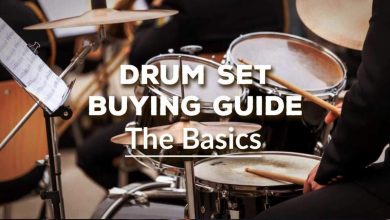Rhythmic Fusion: Blending Percussion Styles from Around the World

Rhythmic Fusion: Blending Percussion Styles from Around the World
Introduction
Music is a universal language that knows no boundaries. It has the power to transcend cultural and geographical differences and bring people together. One fascinating aspect of music is the diversity of percussion styles found around the world. From traditional African beats and Latin American rhythms to Asian percussive techniques, each culture has its unique way of expressing rhythm. In this blog post, we will explore the concept of rhythmic fusion and how it blends various percussion styles from around the world.
What is Rhythmic Fusion?
Rhythmic fusion is the practice of combining different percussion styles from various cultures to create a new and unique sound. It involves breaking traditional boundaries and exploring the possibilities of blending diverse rhythmic patterns and techniques. By fusing elements from different cultures, musicians can create a rich and dynamic musical experience.
Why is Rhythmic Fusion Popular?
Rhythmic fusion has gained popularity in recent years because it offers musicians a creative outlet to experiment with different styles and push the boundaries of traditional music. It allows for an exciting and innovative approach to creating new sounds and rhythms.
How Do Musicians Blend Percussion Styles?
Blending percussion styles requires an in-depth understanding of the rhythms and techniques used in different cultures. Musicians must study and practice various percussion styles to gain proficiency in each. They then experiment with combining these styles, looking for similarities and ways to create a cohesive and harmonious fusion. For example, a musician may combine Latin American clave rhythms with West African djembe techniques to create a unique rhythmic pattern.
Examples of Rhythmic Fusion
1. Afro-Cuban Fusion: This style blends traditional African rhythms, such as those found in Afrobeat and Highlife music, with Cuban percussion techniques like the clave and congas. The result is a lively and infectious blend of African and Latin American rhythms.
2. Indian Jazz Fusion: Indian classical music is known for its complex rhythmic patterns. By infusing elements of jazz, Indian musicians create a unique fusion that combines the improvisational nature of jazz with the intricate rhythms of Indian percussion instruments like the tabla and mridangam.
Benefits of Rhythmic Fusion
1. Creativity and Innovation: Rhythmic fusion allows musicians to explore new musical territories and push the boundaries of traditional music. It encourages creativity and innovation in music composition and performance.
2. Cultural Exchange: By blending percussion styles from different cultures, rhythmic fusion promotes cultural exchange and appreciation. It celebrates the diversity of global music and fosters collaboration among musicians from various backgrounds.
3. Unique Musical Identity: Rhythmic fusion provides musicians with an opportunity to develop their unique musical identity. By combining different percussion styles, artists can create a signature sound that sets them apart from others.
FAQs about Rhythmic Fusion
1. Can I blend rhythmic styles from different continents?
Absolutely! Rhythmic fusion knows no boundaries. You can blend percussion styles from different continents, cultures, and musical traditions to create a truly global sound.
2. Do I need to be proficient in multiple percussion styles to explore rhythmic fusion?
While having a strong foundation in multiple percussion styles is beneficial, it is not a strict requirement. Combining even a few elements from different styles can result in an exciting rhythmic fusion. However, the more diverse your knowledge and skills, the wider the range of possibilities you can explore.
3. How can I start exploring rhythmic fusion?
Begin by immersing yourself in the music and rhythms of different cultures. Study and practice various percussion styles. Attend workshops or seek guidance from experienced percussionists. Experiment with combining different styles and let your creativity guide you. Remember, there are no right or wrong ways to explore rhythmic fusion; it’s all about finding your own unique sound.
Conclusion
Rhythmic fusion is an exciting journey that brings together percussion styles from around the world. It offers musicians a platform to explore, experiment, and create unique musical experiences. By blending rhythms and techniques from different cultures, musicians can push the boundaries of traditional music and contribute to the rich tapestry of global sounds. So, grab your drumsticks or hand drums and embark on a rhythmic fusion adventure!



